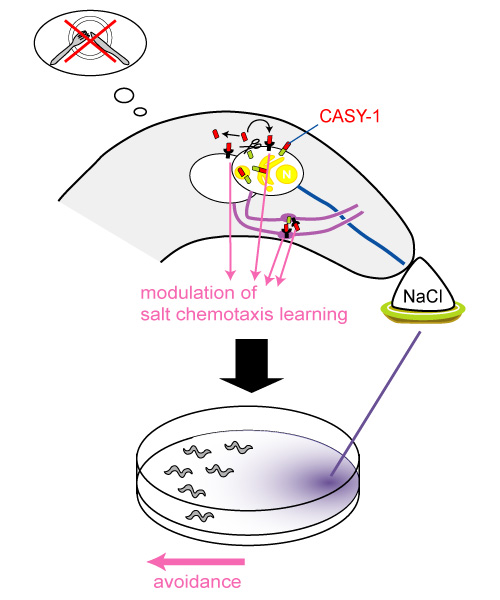Identification of CASY-1, which is essential for memory formation
Nematode C. elegans are usually attracted to NaCl. However, after starved worms were treated with NaCl, they learn to avoid it. We call this phenomenon “salt chemotaxis learning”. Ikeda et al. found that mutants which have aberrant CASY-1, a cadherin-like transmembrane protein, show defects in this learning. CASY-1 is evolutionally highly conserved. There is an interesting report that a SNP of human calsyntenin-2 gene, which is a homolog of casy-1, is genetically linked with memory performance. It is also known that calsyntenin and APP (amyloid precursor protein) are coordinately cleaved by secretase(s) in neurons, and they are co-localized in senile plaque. However, the function of calsyntenin had little been reported. We obtained the evidence that CASY-1 is proteolytically cleaved as well as calsyntenin. Furthermore, we found that the ectodomain (extracellular domain) of CASY-1 is sufficient to rescue the learning defect of casy-1 mutants. These findings will be important clues to reveal the previously unknown relationship between calsyntenin and memory formation, or Alzheimer’s disease.
Program member
Yuichi Iino (Department of Biophysics and Biochemistry, Graduate School of Science)

